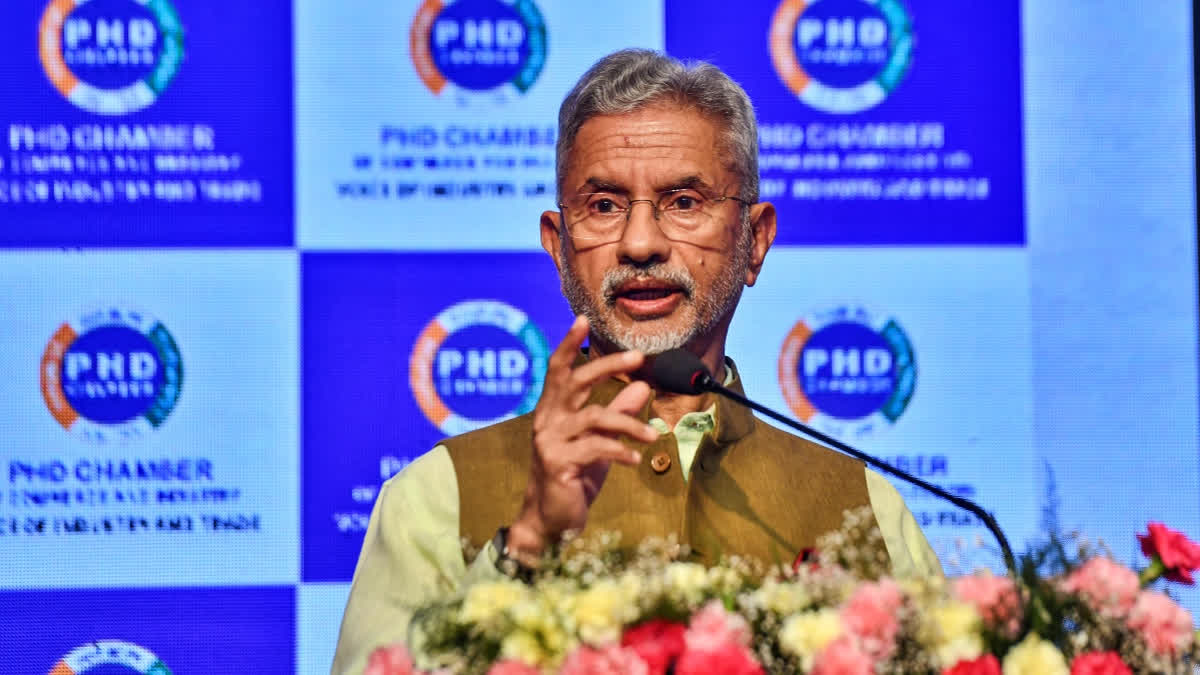New Delhi: With reports suggesting that External Affairs Minister S Jaishankar is going to visit Sri Lanka this month, expectations are that ties between India and the Indian Ocean island nation are likely to see a further uptick as part of New Delhi’s Neighbourhood First Policy.
Though not officially confirmed by India as yet, reports in the Sri Lankan media cited the country’s Foreign Minister Ali Sabry as saying that Jaishankar’s visit will happen “one of these days in this month”.
“I can confirm that External Affairs Minister of India Dr. Jaishankar is expected to be in Colombo in one of these days in this month,” Sabry was quoted as saying by the Economynext.com news website.
“He is coming here just to review ongoing partnerships in various areas – renewable energy, tourism, partnership between the central banks, and partnership between the Finance Ministries and also to prepare for an upcoming visit of (Indian) Prime Minister (Narendra) Modi.”
According to Foreign Minister Sabry, Sri Lanka wants to continue to work with Indians in “the investment area, people-to-people contact, tourism, and also connectivity like electricity as well as land and other connectivity areas of sea, air, and other modes of it".
The last time Jaishankar visited Sri Lanka was in October 2023 to attend the 23rd Council of Ministers’ meeting and the 25th Committee of Senior Officials of the Indian Ocean Rim Association (IORA). This will be his first visit to the southern neighbour after assuming office as External Affairs Minister for the second time under the Modi 3.0 government.
When Sri Lankan President Ranil Wickremesinghe visited New Delhi earlier this month to attend Modi’s swearing-in ceremony, Jaishankar called on the visiting dignitary and expressed his intent to visit the island nation to review ongoing India-aided projects.
Though ties between India and Sri Lanka date back to ancient times, the relationship between the two sides got a further boost when New Delhi gave $4 billion in aid in 2022 when the island nation was facing an unprecedented financial crisis. India is also Sri Lanka’s biggest development aid partner.
Renewable energy cooperation
In the wake of the India-Sri Lanka Economic Partnership Vision document that was signed during Sri Lankan President Ranil Wickremesinghe’s visit to New Delhi in July last year, Indian firms are getting increasing opportunities to tap the renewable energy potential in the Indian Ocean island nation.
In March this year, Sri Lanka Sustainable Energy Authority, Government of Sri Lanka and Bengaluru-headquartered U Solar Clean Energy Solutions signed a contract for the implementation of Hybrid Renewable Energy Systems in Delft (Neduntheevu), Nainativu and Analaitivu islands in the Palk Bay off the coast of Jaffna. The project, which is aimed at addressing energy needs of the people of the three islands, is being executed through grant assistance from Government of India (GoI). The hybrid project combines various forms of energy including both solar and wind, towards optimising capacities. The three facilities, with a total renewable energy capacity of 2,230 KW, will receive financing from an $11-million grant provided by the Indian government.
It is worth mentioning here that the contract for all the three facilities was originally awarded to the Chinese firm Sinosoar in January 2021 after a bidding process following guidelines issued by the Asian Development Bank (ADB), which was supposed to extend a loan for this. However, New Delhi raised security concerns as these facilities lie just 50 km off the southern coast of India. As a result, the Sri Lankan government took away these projects from the Chinese firm and allotted these to India’s U Solar Clean Energy Solutions.
India’s National Thermal Power Corporation and the Adani Group are also working on other renewable energy projects in different parts of Sri Lanka.
People-to-people and tourism ties
The historical and cultural bond between India and Sri Lanka traces back millennia, deeply rooted in their shared heritage of historical events, cultural practices, and religious traditions. Buddhism, in particular, has been a pivotal thread weaving the two nations together. In the 3rd century BCE, Prince Mahendra and Princess Sanghamitra, the children of Emperor Ashoka, brought Buddhism to Sri Lanka, initiating a profound exchange of religious and cultural influences that has endured through the ages.
The Ramayana, one of India’s two major epics, also strengthens these ties, with many places in Sri Lanka linked to the narrative. These mythological and historical connections form a significant part of the collective consciousness of both countries, fostering mutual respect and understanding.
In April this year, a historic milestone in the Indo-Sri Lankan cultural and religious bond was marked with the launch of a Ramayana Trails project.
The Ramayana Trails seeks to highlight nine significant sites mentioned in the Ramayana, scattered across Sri Lanka.
“By offering a spiritual and cultural journey for Hindu pilgrims and travelers alike, the initiative aims to draw millions of Indian and international tourists to the country,” a statement issued by the Sri Lankan President’s Office reads. “Its overarching goal is to strengthen the nation’s spiritual and cultural heritage while also boosting its tourism sector.”
According to the statement, in addition to offering access to these sacred sites, the project aims to provide visitors with an immersive experience by showcasing the ancient spiritual events associated with these revered shrines, brought to life through cutting-edge technologies like Artificial Intelligence (AI), Augmented Reality (AR), and Virtual Reality (VR).
“Spanning from Adam’s Bridge in the Mannar Basin to Seetha Eliya in Nuwara Eliya, every location mentioned in the epic Ramayana has been carefully chosen for inclusion in this pilgrimage endeavour,” the statement reads.
Indians constitute one of the largest groups of foreign tourists visiting Sri Lanka, drawn by the island’s scenic beauty, cultural heritage, and Buddhist sites. Sri Lankan tourists also visit India in large numbers, primarily for pilgrimage to Buddhist sites like Bodh Gaya, Sarnath, and Kushinagar, as well as for medical tourism and leisure.
Keeping with people-to-people ties, India and Sri Lanka have robust educational exchanges. Many Sri Lankan students pursue higher education in India, availing themselves of scholarships provided by the Indian government. Institutions like the Indian Institutes of Technology (IITs) and Indian Institutes of Management (IIMs) attract Sri Lankan students. Additionally, Indian cultural centres in Sri Lanka offer courses in Indian languages, music, dance, and yoga, further enhancing cultural ties.
India-Sri Lanka land connectivity issues
On Sunday, President Wickremesinghe said that the feasibility study for establishing land connectivity with India is nearing completion, PTI news agency reported. While touring Mannar to inspect regional development, Wickremesinghe mentioned that the preliminary phase of the feasibility study is done and the final stage will soon conclude.
The proposed route would connect Rameswaram in Tamil Nadu, India, to Talaimannar in Sri Lanka. This route leverages the existing Adam’s Bridge (or Ram Setu), a chain of natural limestone shoals, which provides a relatively shallow and stable foundation.
India-Sri Lanka power grid connectivity
Power grid connectivity between India and Sri Lanka holds significant promise for enhancing energy security, fostering economic growth, and promoting regional cooperation. The primary proposal involves constructing a high-voltage direct current (HVDC) link between India and Sri Lanka. HVDC technology is suitable for long-distance transmission and can efficiently transfer power with minimal losses.
The proposed route for the HVDC link would connect the southern state of Tamil Nadu in India to the northern region of Sri Lanka, likely spanning across the Palk Strait. This involves laying a submarine cable across the Palk Strait.
According to PTI, the proposal and the potential of connecting a power grid between the two countries are expected topics to be taken up during Jaishankar's visit. A commercial venture for selling excess renewable energy to India will also be on the agenda.



